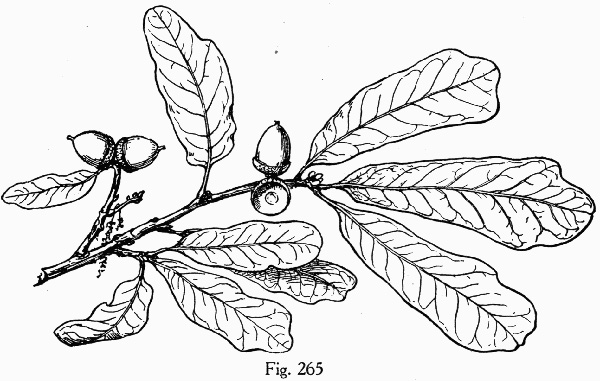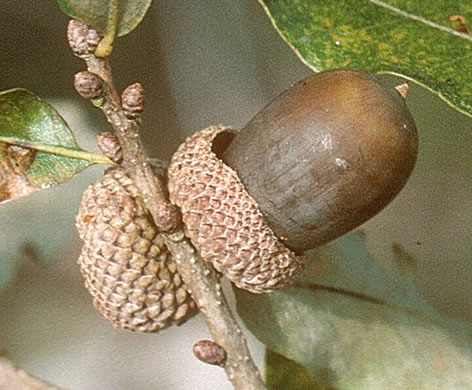Spermatophytes (seed plants): Angiosperms (flowering plants): Eudicots: Core Eudicots: Rosids: Fabids: Fagales
Genus: Quercus
Subgenus: Quercus
Section: Quercus (white oaks)
WEAKLEY'S FLORA OF THE SOUTHEASTERN US (4/24/22):
Quercus durandii var. breviloba
FAMILY
Fagaceae
Go to FSUS key
Dig deeper at SERNEC, a consortium of southeastern herbaria.
Three oak taxa are popularly considered representative of or allied to the Durand oak species complex. Taxonomic disagreement regarding the parameters of each taxon, whether deserving of specific, varietal, or synonymous status, has been ongoing since the beginning of the 19th century.... Read more in Revisiting the Taxonomic and Nomenclatural Problems of the Quercus sinuata Complex.
SYNONYMOUS WITH
PLANTS NATIONAL DATABASE:
Quercus sinuata var. breviloba
FAMILY
Fagaceae
SYNONYMOUS WITH Flora of North America
Quercus sinuata var. breviloba
COMMON NAME:
Bigelow Oak
To see larger pictures, click or hover over the thumbnails.
Ron Lance rwl_sinuatabreviloba2
September
Leaf shape variable, from wavy-margined to entire, lobes rounded to acute, per Woody Plants of the Southeastern US: A Winter Guide (Lance, 2004).
Ron Lance rwl_sinuatabreviloba2b
September
Acorn cup thin, very shallow, covering 1/4 or less of nut, per Woody Plants of the Southeastern US: A Winter Guide (Lance, 2004).
WEAKLEY'S FLORA OF THE SOUTHEASTERN US (4/24/22):
Quercus durandii var. breviloba
FAMILY
Fagaceae
SYNONYMOUS WITH
PLANTS NATIONAL DATABASE:
Quercus sinuata var. breviloba
FAMILY
Fagaceae
SYNONYMOUS WITH
Flora of North America
Quercus sinuata var. breviloba
If a search such as "Carex leptalea var. leptalea" doesn't deliver the results you want, try "Carex leptalea".
Or, to minimize chances of a misspelling, try just "Carex le".
Less is more: If "pencil flower" doesn't deliver the results you want, try "pencil".




